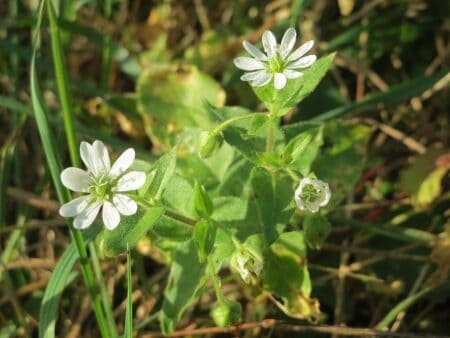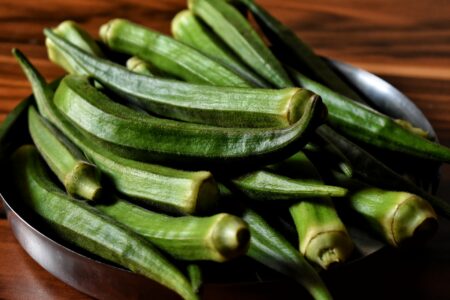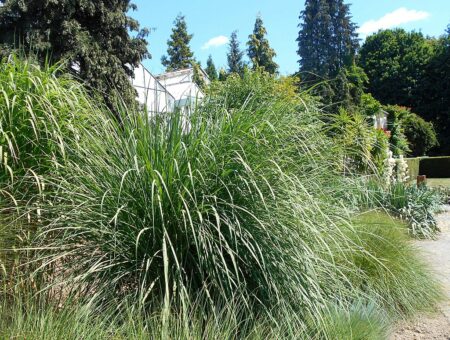Fuchsias, with their elegant, pendulous blossoms, are like nature’s artwork, gracing gardens and outdoor spaces with their vibrant colors and unique charm. Whether you’re an experienced gardener looking to add a touch of elegance to your landscape or someone new to the joys of cultivating flowers, learning the art of growing fuchsias can be a rewarding and delightful journey.
But how do you grow these lovely plants successfully? It can be a bit tricky, from giving them the right conditions to ensuring they bloom beautifully..You may have wondered, “How can I grow such beautiful fuchsias in my garden?” You’re not alone; many aspiring gardeners face this question.
In this comprehensive guide, we will delve into the world of fuchsia cultivation, from the ideal growing conditions that serve as the foundation of their beauty to the essential care and maintenance practices that keep them thriving. We’ll also explore ways to safeguard your fuchsias from common pests and diseases.
Growing Conditions
Now that we’ve set our sights on growing beautiful fuchsias, it’s time to delve into the conditions they love. Creating the perfect environment for these lovely plants is like giving them a cozy home where they can thrive. Let’s explore the key factors that make fuchsias flourish.
Climate
Fuchsias thrive in regions with temperate weather, where summers are mild and winters are cool and moist. These conditions are perfect for their growth. If you live in an area with severe winters, you can still enjoy fuchsias by growing them as annuals or bringing them indoors during the chilly months. Ideally, fuchsias find their sweet spot in USDA hardiness zones 7 to 10. So, if your garden falls within this range, you’re in for a colorful treat with these lovely plants.

Sunlight
Sunlight plays a pivotal role in the life of fuchsia plants. They thrive in locations with bright, indirect sunlight or gentle, filtered shade. While they can tolerate some morning sun, they are sensitive to the scorching heat of afternoon rays, which can harm their delicate leaves. Providing the right amount of light is crucial for their growth and blooming.
Think of it as finding the perfect spot in your garden where these plants can soak up the sunshine without getting sunburned. By ensuring they have the ideal light conditions, you’ll encourage robust growth and the vibrant, colorful blossoms that fuchsias are known for.
Soil
Fuchsias are particular about their soil, and for good reason. They thrive in well-draining soil that doesn’t hold onto excess water. This characteristic helps prevent root rot and other moisture-related issues. Fuchsias also prefer slightly acidic to neutral soil, with a pH level ranging from 5.5 to 6.5.
While the pH scale might sound technical, it simply means that they like their soil to be slightly on the acidic side Creating the right soil environment sets the stage for healthy fuchsia plants with lush foliage and abundant blooms.
Planting Depth
When transplanting them, aim to position them at the same depth as they were in their nursery containers. This ensures that their roots are properly situated, neither too shallow nor too deep. Adequate planting depth allows the roots to access nutrients and moisture while providing stability to the plant.
Also, remember to space your fuchsias appropriately. Providing them with enough room prevents overcrowding, allowing each plant to flourish and show off its vibrant, cascading blossoms to the fullest..
Caring and Maintenance for Fuchsias
Now that we’ve created the perfect environment for your fuchsia plants, it’s time to explore how to care for and maintain these beauties.Let’s dive into the essential aspects of fuchsia care:
Watering
These plants thrive when the soil stays consistently moist but not waterlogged. During hot weather, pay close attention to the soil’s moisture level, as fuchsias may need more frequent watering to prevent it from drying out. However, in colder months or during their dormant phase, reduce watering to allow the soil to dry slightly between waterings.
Always water at the base of the plant to avoid wetting the foliage, which can lead to disease. Mastering the art of watering ensures your fuchsias remain hydrated and healthy, ready to display their colorful and pendulous blossoms.
Mulching
Applying a layer of organic mulch, such as wood chips or compost, around the base of your fuchsias serves several purposes. It helps retain soil moisture, reducing the need for frequent watering. Additionally, mulch acts as a natural weed suppressant, preventing unwanted plants from competing with your fuchsias for nutrients and space.
Moreover, it provides insulation, regulating soil temperature and protecting the roots during temperature fluctuations. Be mindful not to place mulch directly against the plant’s stem to avoid potential issues with rot.
Pruning
Regularly pinch off the tips of branches and remove spent flowers to encourage continuous blooming. During late winter or early spring, embark on a more thorough pruning session to shape the plant and eliminate dead or damaged growth.
Pruning not only maintains the fuchsia’s appearance but also directs its energy toward producing fresh growth and blossoms. This simple practice is akin to giving your fuchsia a refreshing haircut, keeping it in prime condition for a splendid floral display.
Fertilizing
During the growing season, which usually runs from spring to early fall, use a fertilizer designed for flowering plants or one that’s balanced. Follow the instructions on the fertilizer package to know how much to use.
Too much fertilizer can be harmful, so it’s best to stick to the recommended amounts. This regular feeding provides the essential nutrients your fuchsias need to grow strong stems and produce lots of those lovely, hanging flowers that brighten up your garden.
Overwintering
Overwintering fuchsias is crucial if you live in an area with cold winters, as these plants are sensitive to frost. Before the first frost arrives, cut back your fuchsias to about six inches above the ground. Then, gently dig up the plants, taking care not to damage the roots, and place them in pots. Store the potted fuchsias in a cool, dark location where the temperature stays above freezing but doesn’t exceed 45°F (7°C). Keep the soil slightly moist but avoid overwatering.
In late winter or early spring, when the risk of frost has passed, you can reintroduce your fuchsias to the garden, where they will come back to life and delight you with their blossoms once again.
Pests and Diseases
As we care for our fuchsia plants, we need to watch out for some common problems. Pests and diseases can harm our fuchsias, but we can prevent these issues with some simple steps. Let’s learn how to protect your fuchsias from unwanted guests and illnesses:
Common Pests
Fuchsias, like any other garden plants, can occasionally attract unwanted guests. Here are some of the usual suspects and tips on how to deal with them
Aphids: These small, pesky insects can sometimes gather on your fuchsia’s leaves and flowers, causing damage. To deal with them, simply spray a strong stream of water on the affected areas. For more severe infestations, consider using a special soap designed to get rid of aphids.
Whiteflies: Whiteflies are tiny, winged insects that often hide on the undersides of fuchsia leaves. They can be quite a nuisance, but you can control their numbers by using insecticidal soap, which is effective in reducing their population.
Spider Mites: Spider mites are minuscule arachnids that may infest your fuchsia, causing the leaves to develop a stippled, discolored appearance. To discourage these unwelcome guests, regularly mist your fuchsias to increase humidity, making the environment less appealing to them.
Fuchsia Gall Mite: This pest is a bit more specific to fuchsia plants and can cause distorted growth, as well as the formation of galls on leaves and stems. To prevent its spread, promptly prune and dispose of any affected plant parts. This proactive approach can help protect the rest of your fuchsia plants.
Common Diseases
Fuchsias are susceptible to certain diseases that can compromise their vitality and aesthetics. Here’s how to recognize and stave off these prevalent diseases:
Gray Mold (Botrytis Blight): Gray mold often appears as grayish-brown spots on fuchsia leaves and flowers. To prevent this disease, ensure good air circulation around your fuchsias by spacing them adequately. Also, avoid overhead watering, which can create conditions favorable for the growth of gray mold.
Rust: Rust is another common issue that can affect fuchsia plants, showing up as orange or reddish-brown spots on the leaves. If you notice this problem, remove the affected leaves and improve air circulation around your fuchsias. These steps will help prevent rust from taking hold and ensure your fuchsias stay in good health.
By proactively taking these preventive measures, you can establish a safe and nurturing haven for your fuchsias, allowing them to flourish and continue gracing your garden with their captivating blooms.
Conclusion
Fuchsias, with their elegant drooping flowers, bring an extra touch of beauty to any garden or outdoor space. These plants are unique with their bright colors and special shapes, making them appealing to both experienced gardeners and newcomers to the gardening world.
In this guide, we’ve learned about the perfect conditions fuchsias need to thrive, like the right climate, sunlight, well-draining soil, and how deep to plant them. We’ve also explored the essential care steps, such as watering, mulching, pruning, and fertilizing, that keep fuchsias healthy and vibrant.Moreover, we’ve equipped ourselves with knowledge on how to protect our fuchsias from common problems like aphids and whiteflies and diseases like gray mold and rust.
By following these guidelines, we’re not just looking after plants; we’re nurturing the fantastic, drooping blossoms that can transform our gardens into colorful and enchanting places. As we finish our journey, remember that with the right care, your fuchsias will continue to make your garden more vibrant and captivating.
















